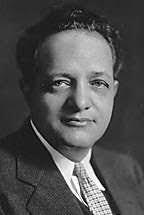Jacob, Moreno

Bio: (1889–1974) American psychiatrist. Jacob Levi Moreno was born in Romania, finished his study of medicine at the University of Vienna, and in 1920is moved to the USA to practice psychotherapy. Moreno is best known for his theoretical and methodological approach of “sociometry”, but his contributions to psychology also include being the founder of "psychodrama" and "sociodrama", and being one of the pioneers of group psychotherapy.
Moreno created sociometry together with American social psychologist Helen Hall Jennings. They used sociometry as a methodological tool for uncovering the social and emotional structures of small groups. This is done by giving questionnaires to every member of a group and asking them to write in the answers to the question of who, from other members of the same group, would they choose or avoid in specific roles. Answers in both options (choose or avoid) were to be put in a hierarchical order of three to five members of a group. These ratings are called ‘‘choices.’’
After processing all the answers of all of the members of the group questioner arrives at a pattern of group preference and avoidance that can be displayed as a diagram called a “sociogram.” Moreno believed that these sociograms could be used to organize the group in such a manner to improve group performance and everyone's satisfaction and personal growth. To promote his approach Moreno founded a journal also named Sociometry. Analyzing choices allowed researchers to identify specific patterns of an association like: “social isolates” (individuals who chose no one and weren’t chosen by anyone); “mutual pairs” (two individuals who choose each other); “pairs with unreciprocated choices”; “transitive triads” (three individuals who all choose each other); “sociometric stars” (individuals receiving most choices); and “cliques” (a set of individuals choosing only each other).
Sociometry also studied factors that influence choices. Those factors are called “principles” and they are: 1) “proximity” of members in their daily life; 2) “reciprocity” in positive or negative preferences; (3) “perceived similarity” of members; and (4) “status” of the individual members (within or outside the group). The first two principles increase the number of reciprocal pairs, while the last two principles produce more unreciprocated choices. Sociometry can be used to measure, predict and improve social relations within some group or organization.
Moreno also created psychodrama, his group therapy method. Psychodrama is based on the assumption that better therapeutic results can be gained if people act out their problems, instead of only talking about them. Psychodrama requires a protagonist (client who wants to resolve the traumatic experience); auxiliary egos (members of the therapeutic group who assume the roles of people in the protagonist’s life); an audience (group members who are there to observe and react to reenactment); and a director (the therapist). The protagonist selects a traumatic event and gives all the necessary information for the reenactment. After the reenactment, all members of the group partake in a discussion about events and reactions they witnessed. The role of the therapist is to direct and facilitate reenactment, and to help the patient gain a new perspective from the psychodrama.
Theoretical approaches
SociometryMain works
First Book on Group Therapy (1932);
Who Shall Survive? A new Approach to the Problem of Human Interrelations (1934);
Psychodrama Volume 1. (1946);
Sociometry, Experimental Method, and the Science of Society (1951);
Who Shall Survive? Foundations of Sociometry, Group Psychotherapy, and Sociodrama (1953).
Sociometry and the Science of Man (1956);
Psychodrama Volume 2: Foundations of Psychodrama (1959);
The Sociometry Reader (1960);
The International Handbook of Group Psychotherapy (1966);
Psychodrama Volume 3: Action Therapy and Principles of Practice (1969).

